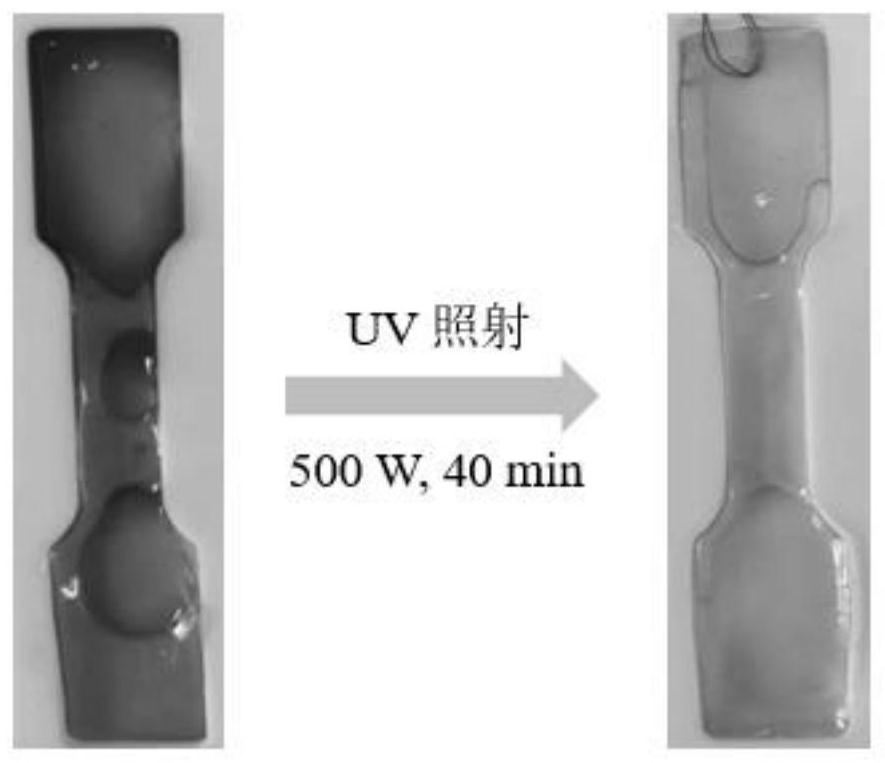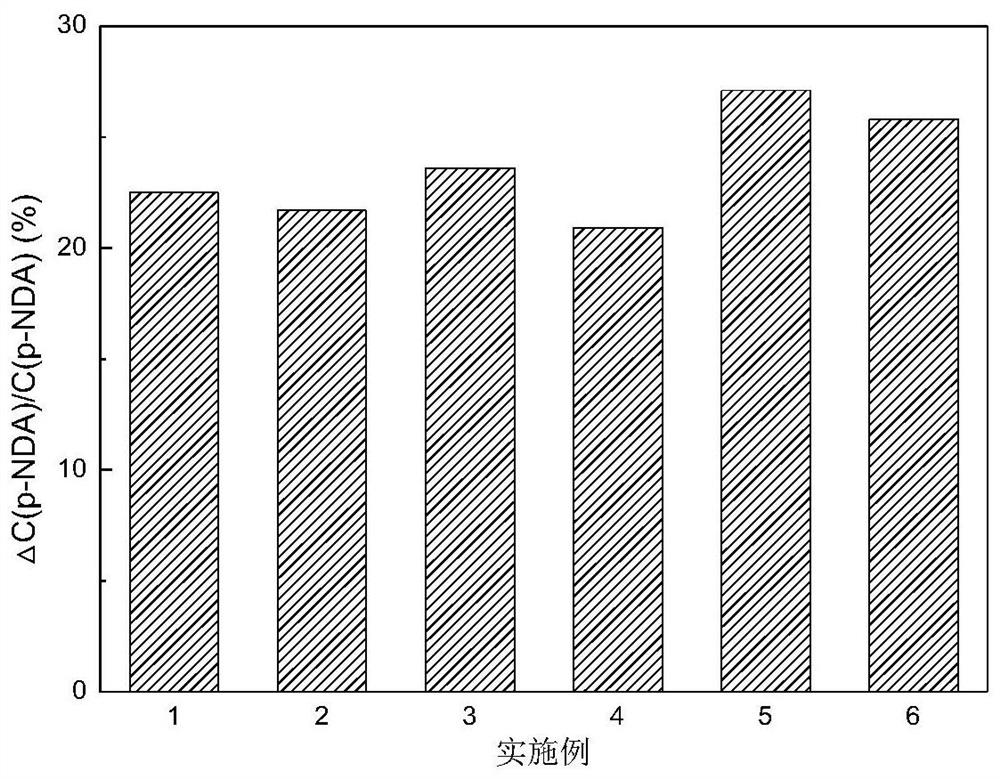A kind of polycarboxylate photocatalytic self-cleaning waterborne polyurethane coating and its preparation and application
A water-based polyurethane, polycarboxylate technology, applied in the direction of polyurea/polyurethane coatings, coatings, etc., can solve problems such as poor cleaning effect of polyurethane coatings
- Summary
- Abstract
- Description
- Claims
- Application Information
AI Technical Summary
Problems solved by technology
Method used
Image
Examples
Embodiment 1
[0030] (1) polybutylene adipate diol of 20 weight parts, 2 weight parts of photoactive polybenzophenone polycarboxylate polyols (PEG-BPTCD), 10 weight parts of isophorone Diisocyanate and 0.1 parts by weight of stannous octoate were reacted at 80° C. for 2 hours to obtain a waterborne polyurethane prepolymer;
[0031] Wherein, polybenzophenone polycarboxylate polyol (PEG-BPTCD) is prepared by reacting BPTCD and PEG (Mw: 2000) at a molar ratio of 1.0:1.1 at 105° C. for 2 hours. No solvent is added during the reaction.
[0032] (2) Add 3 parts by weight of N-methylpyrrolidone and 3 parts by weight of 2,2'-dimethylolpropionic acid to the polyurethane prepolymer obtained in step (1), react at 70°C for 2 hours and then add 1 part by weight of 1,4-butanediol, continue to react at 70°C for 2 hours;
[0033] (3) Add 10 parts by weight of acetone and 2 parts by weight of triethylamine to the above system, and carry out neutralization reaction at 30°C for 1 hour; after neutralization,...
Embodiment 2
[0036] (1) 30 parts by weight of polycarbonate diol, 2 parts by weight of photoactive polybenzophenone polycarboxylate polyol (PEG-BPTCD), 10 parts by weight of hexamethylene diisocyanate, and 0.2 parts by weight of dibutyltin dilaurate were reacted at 80° C. for 2 hours to obtain a waterborne polyurethane prepolymer;
[0037] Wherein, polybenzophenone polycarboxylate polyol (PEG-BPTCD) is prepared by reacting BPTCD and PEG (Mw: 2000) at a molar ratio of 1.0:1.5 at 110° C. for 2 hours. No solvent is added during the reaction.
[0038] (2) Add 2 parts by weight of N-methylpyrrolidone and 2 parts by weight of 2,2'-dimethylolpropionic acid to the polyurethane prepolymer obtained in step (1), react at 70°C for 3 hours and add 1 part by weight of 1,6-hexanediol, continue to react at 75°C for 3 hours;
[0039] (3) Add 5 parts by weight of methyl ethyl ketone and 2 parts by weight of triethylamine to the above system, and carry out neutralization reaction at room temperature for 2 ...
Embodiment 3
[0041] (1) 40 parts by weight of polycaprolactone diol, 5 parts by weight of photoactive polybenzophenone polycarboxylate polyol (PEG-BPTCD), 10 parts by weight of toluene diisocyanate and 0.2 parts by weight of The bismuth neodecanoate catalyst was reacted at 85° C. for 4 hours to obtain a waterborne polyurethane prepolymer;
[0042] Among them, polybenzophenone polycarboxylate polyol (PEG-BPTCD) is prepared by reacting BPTCD and PEG (Mw: 2000) at a molar ratio of 1.0:2.0 at 110° C. for 2 hours. No solvent is added during the reaction.
[0043] (2) Add 5 parts by weight of N-methylpyrrolidone and 2 parts by weight of 2,2'-dimethylolpropionic acid to the polyurethane prepolymer obtained in step (1), react at 80°C for 2 hours and add 2 parts by weight of diethylene glycol, continue to react for 3 hours at 75°C;
[0044] (3) Add 10 parts by weight of methyl ethyl ketone and 3 parts by weight of triethylamine to the above system, and carry out neutralization reaction at 30°C fo...
PUM
 Login to View More
Login to View More Abstract
Description
Claims
Application Information
 Login to View More
Login to View More - R&D
- Intellectual Property
- Life Sciences
- Materials
- Tech Scout
- Unparalleled Data Quality
- Higher Quality Content
- 60% Fewer Hallucinations
Browse by: Latest US Patents, China's latest patents, Technical Efficacy Thesaurus, Application Domain, Technology Topic, Popular Technical Reports.
© 2025 PatSnap. All rights reserved.Legal|Privacy policy|Modern Slavery Act Transparency Statement|Sitemap|About US| Contact US: help@patsnap.com


